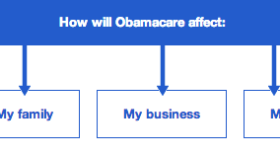Second Opinion is a weekly Q-and-A series that answers questions from San Diegans on the Affordable Care Act. Ask yours here.
The Question: How will insurance exchanges calculate household income and determine premium rates for domestic partners?
Jacques Eicher is a mechanical engineer from Switzerland. He now has U.S. citizenship and lives in Cardiff with his domestic partner, Rose.
The two signed an affidavit several years ago stating that they're domestic partners so Rose could get on his employer's health plan. But that company was bought out by and out-of-state firm and no longer offers Rose coverage.
Eicher has been paying her full premium in recent years and wants to switch her to a subsidized Covered California plan.
Here's his question:
"My question was, how are they going to calculate the income. I understand if people are married, it's going to be both salaries. But if you are not – like, we are in a domestic partnership – then how are they going to calculate this?"
The Takeaway: If you file taxes together, you shop for insurance together.
Bear with me. This is a tricky question.
Married couples, including those in same-sex marriages, would apply on Covered California as a single household. Both incomes would be taken into account. The Supreme Court's ruling on DOMA, the Defense of Marriage Act, made that part pretty simple.
But overturning DOMA didn't change anything for registered domestic partners. They cannot file taxes jointly with the Internal Revenue Service, so Covered California has had to get creative.
Domestic partners will have to shop the exchange separately, according to a Covered California spokeswoman. Their premium rates would be based on half of their combined income. A simple example – if one partner makes $40,000 and the other makes $20,000, both would tell Covered California their income is $30,000.
But it gets trickier. Eicher and Rose's case is a little different because they aren't registered domestic partners.
The state does not recognize domestic partnerships for opposite-sex partners because they have the option to marry, said Leigh Kretzschmar, a San Diego attorney specializing in domestic partnerships. (The rule doesn't apply to couples over the age of 62)
That affidavit Eicher and Rose signed doesn't legally bind them outside of Eicher's previous employer. Some companies will cover long-term partners if you file paperwork with their human resources department.
That means Rose's relationship with Eicher won't come into play at all. She can apply on the health exchange as an individual. Whether she qualifies for subsidies depends on her income alone. Subsidies are available to people who earn less than 400 percent of the federal poverty level, or $44,680.
A good rule of thumb: If you file federal taxes together, you'll shop the exchange together. If you file separately, you'll shop separately.
The Orders: Apply for a Covered California plan by March 31.
Covered California is the only place you'll find federal premium assistance if you're eligible. Open enrollment on the exchange has already begun and runs through March 31. Plans won't kick in until Jan. 1.
Check out last week's Second Opinion: Does Obamacare give employees more choice over coverage?









